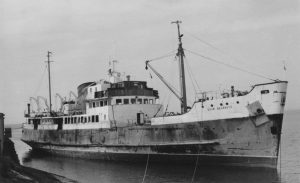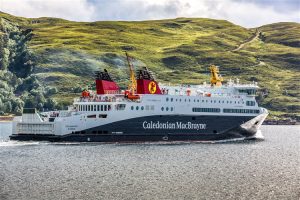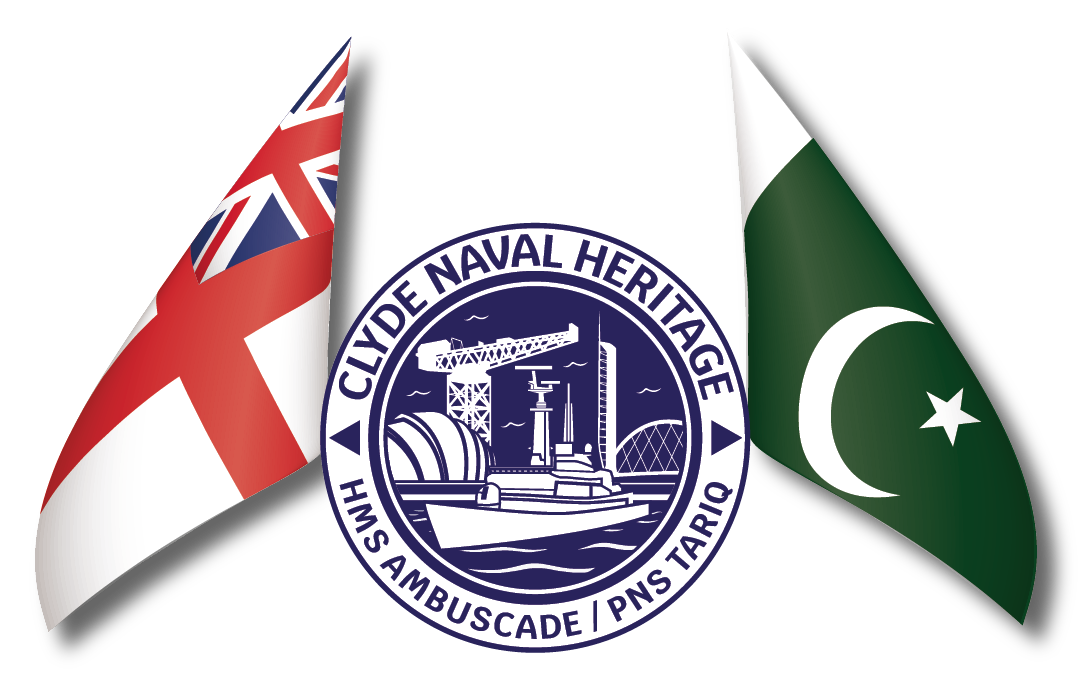The MV Loch Seaforth is an important and iconic vessel in Scottish maritime history. Named after Loch Seaforth, a sea loch situated between the Isle of Lewis and Harris in the Outer Hebrides, two ships with this name have served the Hebridean communities, each with its own unique story. This historical account covers both vessels named MV Loch Seaforth, focusing on their construction, operations, significance to Scottish ferry transport, and the legacy they left.
MV Loch Seaforth (1947–1972): The Original Loch Seaforth
Construction and Launch
The first MV Loch Seaforth was built in 1947 by Denny Brothers, a well-known Scottish shipyard based in Dumbarton. The ship was designed specifically for the challenges of operating in the rough waters of the Minch, the strait between the Scottish mainland and the Isle of Lewis.
Launched: May 23, 1947
Builder: Denny Brothers, Dumbarton
Length: 223 feet (68 meters)
Tonnage: 993 tons
The ship was commissioned by David MacBrayne Ltd., a company operating a fleet of ships serving the west coast of Scotland. She was a combined passenger and cargo vessel, capable of carrying around 600 passengers and 50 cars. As a modern diesel-powered ship, MV Loch Seaforth replaced aging steam-powered vessels, heralding a new era for the Hebridean ferry service.
Route and Operations
MV Loch Seaforth primarily served the Stornoway to Mallaig/Kyle of Lochalsh route. This route connected the Isle of Lewis to the mainland, providing vital transportation for both people and goods. It was a lifeline for the communities of the Outer Hebrides, offering a reliable service even in challenging weather conditions, which were common in the region.
Key routes: Stornoway to Mallaig, and later Stornoway to Kyle of Lochalsh
Service: Passenger, cargo, and vehicle transportation
In addition to her regular ferry duties, Loch Seaforth was known for her role in transporting cattle from the islands to mainland markets, a key economic activity for the islanders.

Challenges and Accidents
Over the years, Loch Seaforth faced numerous challenges, primarily due to the often harsh weather conditions in the Minch. She was known for her sturdy design and ability to operate in rough seas. However, in 1972, after 25 years of faithful service, the Loch Seaforth was caught in a major storm while approaching Ullapool, where she struck a submerged object. Although the damage was not catastrophic, the vessel was deemed beyond economic repair due to her age.
Decommissioning
The original Loch Seaforth was decommissioned after the 1972 incident and was scrapped in 1973. Her legacy, however, lived on in the memories of the communities she served, having been a vital part of Hebridean life for a quarter of a century.
MV Loch Seaforth (2014–Present): The Modern Loch Seaforth
Construction and Launch
The contract for the construction of the new ferry was awarded in 2012 to the German shipbuilder Flensburger Schiffbau-Gesellschaft (FSG), a renowned shipyard known for building large ferries. However, the tradition of Clyde shipbuilding remained strong, and the final outfitting and a portion of the shipbuilding process were carried out by Clyde-based companies.
Launched: March 21, 2014
Builder: Flensburger Schiffbau-Gesellschaft, Germany
Length: 116 meters (380 feet)
Tonnage: 8,680 tons
Passenger capacity: 700 passengers
Vehicle capacity: 143 cars or 20 trucks
Although FSG was responsible for the main construction, the River Clyde played an essential role in the development of the MV Loch Seaforth. In keeping with the proud tradition of shipbuilding on the Clyde, critical elements of the vessel’s assembly, particularly in terms of electrical systems, fitting, and interior work, were handled by Clyde-based companies. This brought a degree of continuity to the long-standing association between CalMac ferries and the Clyde shipyards.
The construction work was closely monitored to ensure it met the high standards of Scottish ferry operations, as the Loch Seaforth would be facing the often challenging conditions of the Minch, the body of water separating the mainland from the Hebrides.
This new vessel was built for Caledonian MacBrayne (CalMac), the company that succeeded David MacBrayne Ltd. CalMac’s ferries remain a critical part of Scotland’s transportation infrastructure, particularly in the Highlands and Islands.
Features and Innovations
The new Loch Seaforth was a major technological upgrade from the previous ferries serving the Hebrides. Some of its key features include:
Dual-fuel capability: The vessel can operate on both marine diesel and liquefied natural gas (LNG), reducing emissions and improving fuel efficiency.
Advanced stabilisation: Designed to provide a smoother ride across the often turbulent waters of the Minch.
Comfort and accessibility: Modern facilities, including comfortable passenger lounges, restaurant areas, and accessibility features for passengers with disabilities.

Route and Operations
The MV Loch Seaforth now operates on the Stornoway to Ullapool route, one of the busiest ferry routes in the Hebrides. She runs daily services, ensuring the efficient transport of passengers, vehicles, and goods between the Isle of Lewis and the Scottish mainland.
Key route: Stornoway to Ullapool
Service: Passenger, vehicle, and freight transport
In addition to its daily services, the vessel plays an important role during busy periods like the summer tourist season, supporting the Hebridean economy by facilitating travel for both residents and visitors.
Incidents and Challenges
Despite being a state-of-the-art vessel, the new MV Loch Seaforth has faced operational challenges. In 2015, shortly after entering service, she experienced engine problems that temporarily took her out of service. CalMac arranged for alternative vessels during her downtime, but the incident highlighted the logistical difficulties of maintaining ferry services in the Hebrides when a key vessel is unavailable.
Role During the COVID-19 Pandemic
During the COVID-19 pandemic, the MV Loch Seaforth played a crucial role in maintaining essential ferry services between the Isle of Lewis and the mainland. Although passenger numbers were significantly reduced due to travel restrictions, the ferry continued to transport essential goods and provide a lifeline to island communities.
Current Status and Future Prospects
As of 2024, MV Loch Seaforth continues to operate on the Stornoway to Ullapool route, serving the needs of the Outer Hebrides. She remains one of the largest and most important vessels in the CalMac fleet. The vessel is expected to remain in service for many years, providing reliable transportation and helping to support the economic and social life of the Hebridean islands.
The Legacy of MV Loch Seaforth
The two vessels named MV Loch Seaforth have left a lasting legacy in the maritime history of Scotland. The original 1947 vessel was a pioneering force in Hebridean transport, while the modern 2014 vessel represents the technological advancements of the 21st century. Both ships have been critical to the connectivity of the Isle of Lewis and the broader Outer Hebrides, ensuring the flow of goods, vehicles, and people across the Minch.
For the island communities, the MV Loch Seaforth is more than just a ferry; it is a symbol of reliability, resilience, and continuity. The ship’s name, now synonymous with the enduring connection between the mainland and the Hebrides, will likely continue to hold an important place in Scotland’s maritime story.

